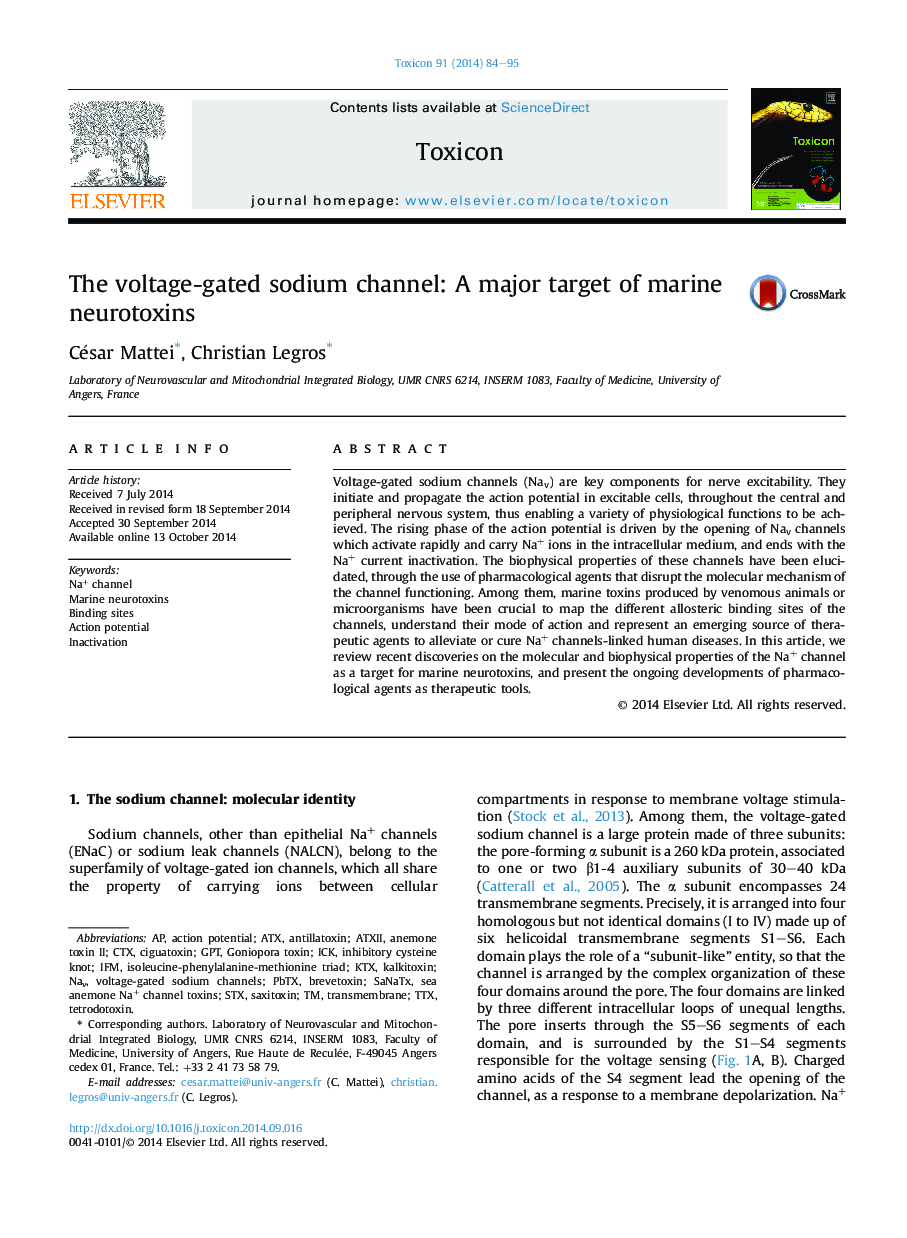| Article ID | Journal | Published Year | Pages | File Type |
|---|---|---|---|---|
| 2064531 | Toxicon | 2014 | 12 Pages |
•Voltage-gated sodium channels play an essential function in excitable cells.•They are targeted by numerous marine toxins.•Each toxin targeting sodium channels impair their global functioning.•A binding site on the sodium channels is correlated to modifications of the gating mechanisms.•Marine neurotoxins represent an emerging source of therapeutics.
Voltage-gated sodium channels (Nav) are key components for nerve excitability. They initiate and propagate the action potential in excitable cells, throughout the central and peripheral nervous system, thus enabling a variety of physiological functions to be achieved. The rising phase of the action potential is driven by the opening of Nav channels which activate rapidly and carry Na+ ions in the intracellular medium, and ends with the Na+ current inactivation. The biophysical properties of these channels have been elucidated, through the use of pharmacological agents that disrupt the molecular mechanism of the channel functioning. Among them, marine toxins produced by venomous animals or microorganisms have been crucial to map the different allosteric binding sites of the channels, understand their mode of action and represent an emerging source of therapeutic agents to alleviate or cure Na+ channels-linked human diseases. In this article, we review recent discoveries on the molecular and biophysical properties of the Na+ channel as a target for marine neurotoxins, and present the ongoing developments of pharmacological agents as therapeutic tools.
